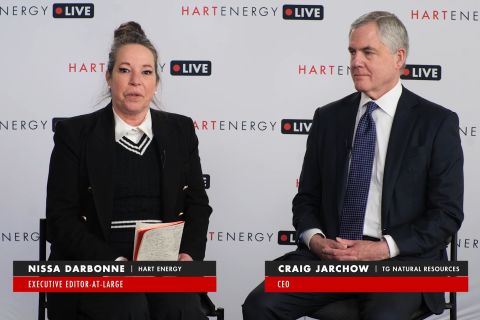In the last week of March, the U.S. rig count reached a 10-year high and international activity has started to pick up after lagging domestic drilling. Strong natural gas prices and looming supply shortages, and increasing international activity, especially in deep water, will pull earnings for the service and supply sector higher. But are investors convinced? The Oilfield Service Index (OSX), a measure traded on the Philadelphia Stock Exchange that includes 15 large-cap service and supply stocks, has been extremely volatile. It has outperformed the S&P 500 this year, even though it is down year to date after reaching a high last September. "It bounces up to 140, then down to 120, then back up to 140, and then 120 again-but I ask you, what has changed for these companies? Absolutely nothing," said William H. Walker, president of Howard Weil , at the company's 29th annual energy conference in New Orleans recently. Howard Weil analysts view the current pullback of the OSX as an opportunity. Baker Hughes' rig count for the week ended March 30 rose to 1,193, but the OSX plunged to a new low of 112 during the conference, which was plagued all week by the overall sell-off in the stock market. To the chagrin of many, the stock prices of most of the service companies that made presentations went down during the week. Investors said it was due to end-of-quarter profit taking. But speakers insisted there are several signs that the service sector turnaround is for real. Dayrates for premium jackup drilling rigs in the Gulf of Mexico have risen dramatically and are forecast to rise another 15% to 20% this year, said James C. Day, chief executive officer of Noble Drilling Corp. "I think the momentum we have today will run through the second quarter at least. I've never seen the fundamentals look this good for our customers as well as ourselves." "But everybody always asks, how long can this last?" said Bernard Duroc-Danner, chief executive of Weatherford International. He said customers face many constraints. "The majors cut too many people and the independents don't have enough prospects." He also cited growing opposition to the Federal OCS Lease Sale 181 scheduled in December and which includes blocks in the eastern Gulf of Mexico about 150 miles offshore Florida. Florida Gov. Jeb Bush opposes the sale. "International markets have been late in recovering, as our customers report shortages of engineering personnel, or they have been very cautious and absorbed in merger activity," Duroc-Danner said. "But price signals for our new contracts are higher than for the older, expiring contracts-so we have a coiled spring in the international arena." Another example of a healthy service company is Smith International. The Houston firm reported increased revenues in each of the last eight quarters, based on increasing activity and the fact that it has completed more than 40 small acquisitions during the last six years. Smith projects earnings in the first quarter of 2001 will be about 65 cents per share, some 36% ahead of the same quarter a year ago. From 1994-99 its return on capital employed was 11%. "We are one of only two service companies to have had our EVA [economic value added] exceed our cost of capital in that time frame," said Douglas Rock, chairman and CEO. An aggressive newbuild program is being funded now by Tidewater Inc. in anticipation of increasing offshore development in Brazil and West Africa as well as the Gulf of Mexico. Its offshore supply vessels under construction are 240 feet long, significantly larger than the company fleet's typical 180-foot length. "We are at 100% capacity working for our 180-foot supply boats and dayrates are triple what they were a year ago," said William C. O'Malley, chairman, president and CEO.Between acquisitions and these newbuilds, Tidewater plans to take delivery of 32 new vessels between now and 2004, and its revenues will thus jump from $72 million today to $150 million, O' Malley estimated. Cal Dive International Inc. also expects to benefit from the offshore upturn. "There were 142 announced deepwater discoveries as of year-end 2000 that have yet to be completed and brought into production. That's where we come in," said CEO Owen Kratz. "By 2003 the industry will have run out of capacity for setting subsea trees, flowlines, pipelines and so on. The contractor who can hold onto his employees in the next few years is the winner."
Recommended Reading
Sold in 66 Days: Inside the Diamondback-Endeavor Deal
2024-03-26 - Diamondback Chairman and CEO Travis Stice first offered “at least $25 billion” for Endeavor Energy Resources on Dec. 8. The deal closed just weeks later for $26 billion.
Marketed: KJ Energy Operated Portfolio in East Texas
2024-04-16 - KJ Energy has retained TenOaks Energy Advisors for the sale of its operated portfolio located in East Texas.
Marketed: Team Operating Gulf Coast Opportunity
2024-03-19 - Team Operating LLC has retained PetroDivest Advisors for the sale of certain oil and gas leasehold and related assets spanning multiple counties in Texas, Louisiana and Mississippi.
The Answer to Curbing Permian Associated Gas? More M&A
2024-04-03 - Consolidation will result in less oil production, and therefore less associated gas, as fewer wells are produced, an energy analyst says.
Exclusive: Is TG Natural Resources Looking to Snap Up More?
2024-03-27 - At Hart Energy's DUG Gas+ Conference and Expo in Shreveport, Louisiana, TG Natural Resources' President and CEO Craig Jarchow said the integration of the Rockcliff Energy acquisition is well underway and that "being acquisitive is certainly" in the company's future.



